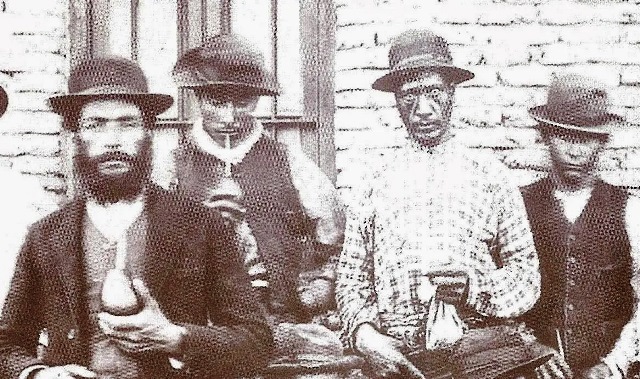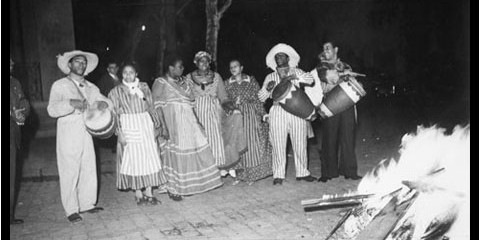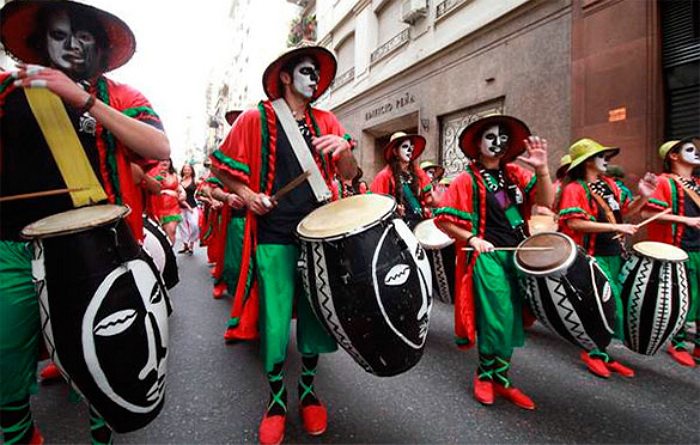In 1778, Argentina’s black community constituted 37% of the total population. Today, only less than 5% are black. You may think this was only a result of migration or other factors. But the story is darker, grimmer, and scarier. Let’s not forget the Nazis made Argentina their escape route. Here, we’ll take a trip down memory lane to how Argentina erased the black community from its history. And the world did nothing or said anything about it.
A History of Afro-Argentines
It’s shocking how what happened to Black Argentineans isn’t properly documented in history books or taught in schools. The Afro-Argentinean population was reportedly ravaged by Domingo Faustino Sarmiento, the country’s president, from 1868 to 1874. This was done through a “covert genocide.” By 1875, so few Black people were left in Argentina that the government didn’t bother registering African descendants in the national census. It was done. Argentina erased the black community successfully.

The first recorded Afro-Argentines came to Argentina as slaves in the 16th century. They had been taken from their native Africa in chains. Trading was the primary business activity, as Buenos Aires, the capital of Argentina, had just been established. Slaves were increasingly being brought into and taken out of Bueno Aires. By the 1600s, the slave trade sector had expanded to the point where importing slaves from Africa accounted for nearly 70% of all trade in Buenos Aires. It was just a matter of time until Argentina legalized slave trading, which continued well into the 1800s.
Although the slave trade was prohibited in Argentina in 1813, slavery persisted until 1853. Then, Afro-Argentines made up one-third of Argentina’s population by the time the slave trade was abolished in the 19th century, even though many of them were slaves or the descendants of slaves and some others were still in slavery. Black people in Argentina also actively participated and influenced Argentine culture through their African customs. For instance, the well-known Tango musical and dance tradition, which originated in Argentina, may be traced back to the African nation of Angola.
Conflicts in Argentina Involving the Afro-Argentines and How it Was Exaggerated
The assumption that many black men who made up the majority of the black community died in these 18th-century wars is one of the traditional explanations for how Argentina erased the black community from its history. But could this be true?
While the Afro-Argentines were still in Argentina, the Argentine war for independence came, and they experienced it all. The war started in 1810 and lasted until 1816 when Argentina finally gained independence from Spain.
However, it is also possible that black men, still considered slaves then, would have been coerced into participating in the battle. And this would have ended up causing the Afro-Argentines men to suffer more casualties. Even though, Maria Remedios del Valle, an Afro-Argentine who participated in the Argentine independence fight with her husband and boys, is notable among these slave soldiers.
Undoubtedly, several black people died in Argentina’s numerous battles. However, to say that these incidents alone are responsible for the extinction of Afro-Argentines in Argentina is an exaggeration. The black population still made up around one-third of the population after slavery was abolished in 1853. Therefore, it is improbable that the conflicts were to blame for the sharp decline in the black population after the 1800s.

Immigration Policies of the Europeans
Following a string of conflicts in the 19th century, the Argentina government issued an appeal for immigrants from Europe. This was likely in response to the low population of the nation brought on by the deaths in the wars. Luckily for them, it was approved. Argentina’s current Constitution was adopted in 1853. The 25th Article of the Constitution, though it had already witnessed the abolition of slavery, was the one that formally removed all restrictions on immigration into Argentina. And yes, it is understandable that people would be wary of this unrestricted entry into the nation. Who knows? For such a notoriously racist country, anything could be a trap.
The likelihood of Argentina becoming a more racially diverse nation increased as more European immigrants arrived. Finally, there were more white people to balance out the rising black population, and eventually, a new mixed race emerged. However, racial profiling would be inevitable in a nation that takes great pride in its European history.
How Argentina Erased The Black Community
Two reasons are frequently cited for the abrupt and dramatic disappearance of Afro-Argentines from Argentina. The first is the war against Paraguay (1865–1870), alongside other conflicts, in which thousands of black soldiers participated and died. A second catastrophic element was the yellow fever epidemic that swept through Buenos Aires in 1871. The epidemic killed large portions of the local populace.

However, some sources have continually argued that the covert genocide instigated by the then-Argentine president played a key role in how Argentina erased the black community, the Afro-Argentines.
President Sarmiento was a fervent supporter of white European racial purity. Through several government initiatives that ultimately proved harmful to the life of the Afro-Argentines, Sarmiento started a systematic erasure of African existence. He separated the black community from the Europeans, depriving them of a functioning infrastructure and adequate medical care. Consigning them to death as cholera and yellow fever outbreaks swept through the city.
He forced Afro-Argentines into the military, imprisoned them for trivial or wholly fabricated offenses, and executed them. By 1875, a toxic concoction of oppressive laws, epidemics, and unending warfare had reduced the black population. It had gotten to the point where the government did not even attempt to count them in the national census.
Black people have been symbolically and physically removed from the country’s memory and historical perception today. It is so bad that some Argentines even believe there was no slave trade in their country. Government officials in Argentina, who have for many centuries chosen to conceive their nation as an all-white extension of Western Europe in Latin America, view this huge erasure of historical, physical, and cultural meaning as a win.
Argentina’s Racial Tactic in the 19th Century
The government’s rejection of Argentina’s racial variety was symbolized by the label “non-whites,” used to describe the new generation of people born through interracial marriages. If ranked, pure black people would be somewhat below non-white people, and white people would be above both. In this way, Argentina prepared the ground for the start of its “Whitening,” with interracial unions serving primarily as the whitening agent. Would you blame the Afro-Argentines? Of course, No! It seemed to make sense. In the face of discrimination, was there any other option? Before the abolition of slavery in 1853, black people were denied the right to higher education. White children received more years of education than black children. And due to their poor financial and economic standing, black people were denied access to healthcare.
However, the idea appeared to have some success because kids with mixed-race parents had access privileges reserved for white people and were perceived to have turned a little whiter, as evidenced by their lighter skin tones. As a result, both their social position and that of their ancestors rose, decreasing the likelihood that they would face discrimination.

The Afro-Argentines in the Present-Day
It’s incredible how veiled racial discrimination contributed to Argentina’s erasing of its black heritage and how it had long-lasting effects. In addition to the loss of the lives of Afro-Argentines, history also lost black consciousness and black testimonies. However, Afro-Argentines have recently continued their effort to preserve and restore the black account in Argentine history by sharing their tales in response to the black community’s revival in the 20th century.
When November 8 was designated by Argentine law to honor Maria Remedios del Valle, the Afro-Argentine soldier who fought for Argentina during the Argentine War of Independence in the 1810s, it was a notable accomplishment. Hence, since 2013, November 8 has functioned as a day when Argentina revisits and celebrates its African roots. This day is officially known as the national day of Afro-Argentines and African Culture.
Before you go…
Hey, thank you for reading this blog to the end. I hope it was helpful. Let me tell you a little bit about Nicholas Idoko Technologies. We help businesses and companies build an online presence by developing web, mobile, desktop, and blockchain applications.
As a company, we work with your budget in developing your ideas and projects beautifully and elegantly as well as participate in the growth of your business. We do a lot of freelance work in various sectors such as blockchain, booking, e-commerce, education, online games, voting, and payments. Our ability to provide the needed resources to help clients develop their software packages for their targeted audience on schedule is unmatched.
Be sure to contact us if you need our services! We are readily available.
Put Your Tech Company on the Map!
Get featured on Nicholas Idoko’s Blog for just $200. Showcase your business, boost credibility, and reach a growing audience eager for tech solutions.
Publish Now










